Drizzled over granola, spread over toast, stirred into hot tea or glazed over roasted ham. These are just a few ways you can enjoy our Scottish heather honey.
From Royal origin to drizzling over our breakfast, this is the story of our honey.
Checkout using your account
Checkout as a new customer
Creating an account has many benefits:
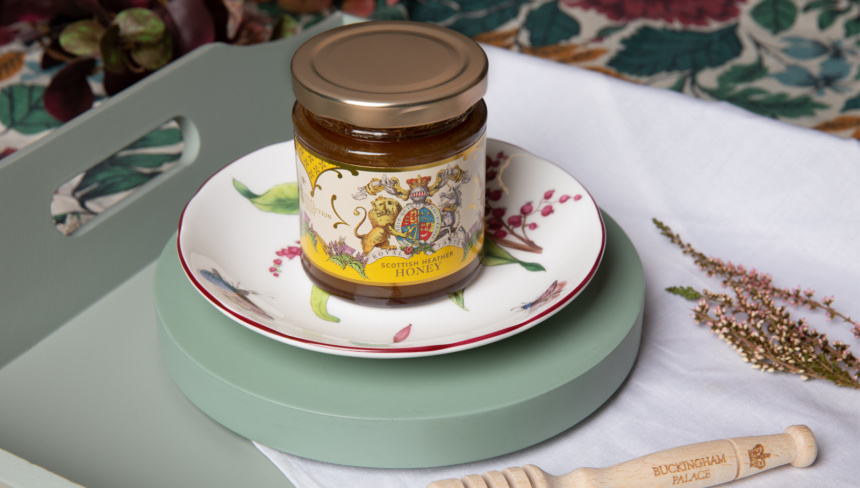
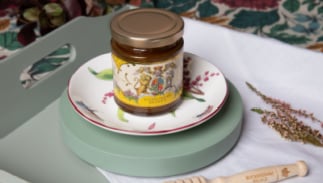
Drizzled over granola, spread over toast, stirred into hot tea or glazed over roasted ham. These are just a few ways you can enjoy our Scottish heather honey.
From Royal origin to drizzling over our breakfast, this is the story of our honey.
Balmoral Castle, on the Balmoral Estate, is located in Aberdeenshire, Scotland. Nestled near the village of Crathie, the Balmoral Estate is home to beehives on the heather-rich moorlands. The wonderful hives are spread over farmland up and down the east coast of Scotland.
Members of the Royal Family, including Their Majesties King Charles and Queen Camilla, Queen Elizabeth II and The Princess of Wales, have all shown a keen interest in keeping bees, the production of honey and the postive impact it has on improving biodiversity and protecting bee habitats.
Delicious honey is used throughout the year at various Royal events including receptions and the garden parties which take place during the summer. The gardens at Buckingham Palace and Clarence House are home to hives and produce enough honey for both residences to be self-sufficient.
On the Balmoral Estate, the beekeeping season starts around the springtime, when the weather begins to get warmer. The bees gather nectar from a wide range of flowers, and crops are also pollinated from strawberries and raspberries on soft fruit farms.
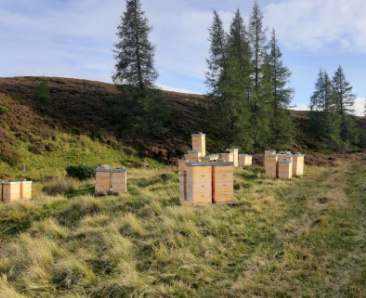

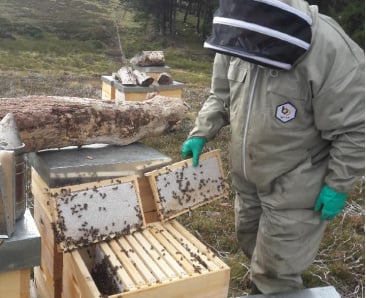

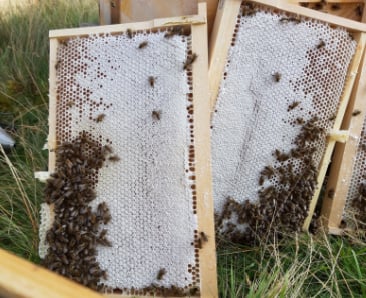

The hive entrances are closed with foam strips, then they are strapped together and loaded onto vehices and trailers. Subsequently, they are then driven in the northern direction up to various glens, and placed on parts of the estate where there is a large amount of heather. The bees are released and reorientate themselves on their hive. If the weather conditions are right, the bees begin to visit the heather flowers and gather the nectar. They remain there until the end of August when the heather flowers finish. Finally, the honey is removed, the hives are then removed from the higher altitude estates and are returned back to the farms where they remain for the autumn and winter months.
Our delicious jars of honey have a rich, velvety texture and can be enjoyed at the breakfast table or perhaps during a spot of afternoon tea.
The jar of Palace of Holyroodhouse Scottish Heather Honey features the Scottish Royal Coat of Arms. The unicorn, which is the national animal of Scotland, is crowned and stands proudly on the dexter (the heraldic right of the shield) and the Scottish are given precendece in the shield. The shield is magnificently surrounded by the Order of the Thistle and the motto of the order in Latin. 'Nemo me impune lacessit' which translates to 'No one will attack me with impunity' features at the base of the shield alongside the thistle, the national flower of Scotland.
Drizzle this aromatic, sweet honey on your breakfast with our traditional, wooden honey dipper. Engraved with 'Buckingham Palace' or 'Palace of Holyroodhouse' the honey dipper is the perfect accompaniment when gifting a jar of this magnificent honey to a loved one.